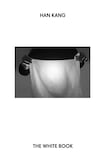
"Now I will give you white things,
What is white, though may yet be sullied;
Only white things will I give."
These lines, one of the rare eruptions of poetry in Han Kang's studied and astonishing novel, set out the author's intentions: she wishes to speak to us of a particular colour, and of her character's encounters with it. The White Book opens with a list – salt, snow, "laughing whitely" – and the character hopes that this white list will be "transformative". That it will help her find peace, uncomplicatedness, and the whiteness of calm.
Using this monochromatic map, Kang leads us through a life, one that is filled with the weight of history, and a particular bereavement. Her unnamed protagonist has moved to a “city of severe winters”, a lightless place where the days are short. Here, memory insinuates itself, insisting that she look back to the hard, rural life of her parents. To the premature sibling born before her, with “a face as white as a crescent-moon rice cake”, who died because of her early arrival and the remoteness of the family home. “If you had lived beyond those first few hours I would not be living now”, the narrator thinks, “My life means yours is impossible”.
The weight of this guilt and a cyclical what-might-have-been reverie weighs heavily on these pages. The whiteness of the child – and the swaddling bands that became its shroud – provoke an initial interrogation of the colour itself. It leads back to everything. As the reader moves through each white object, we are reminded constantly that they are not separate: each living thing is connected. Short consecutive chapters – “Blizzard”, “Ashes”, “Salt” deal with the form of white things: hard, soft, or ephemeral.
Other objects the character focuses on – lace curtains, a falling handkerchief – are about the tactility of whiteness. These are the things she can see, or feel, unlike her absent sister.
If this sounds abstract, it is, but it’s done with such tenderness that the reader engages with it, and wants more of this colour-coded analysis. One woman, alone in a city and grieving, incites us to examine our own experience and place in the world: our immediate environment, the past, our experiences of loss. It’s a profound piece of work, and not one that every writer could pull off.
There are hundreds of ways to tell a story, and there has been a recent swerve towards fragmentary narratives: work that refuses the labels forcibly applied to it, from writers like Maggie Nelson, Megan Hunter and Jenny Offill. Kang is as concerned with form as much as she is with ideas, something that is evident in her previous work. “The Vegetarian” was originally written as three short novellas, and “Human Acts resembles” an interlinked collection of short stories.
“The White Book” is written in short sections, many just a paragraph long. The Korean writer deliberately utilises the possibility of the page itself. The book attempts to confront that sense of blankness, its own white spaces. This is a work that is as much about what is unsaid and omitted, as what Kang directly reveals.
Several of the chapters are highly self-contained, and while each forms a distinct spoke in the novel, they exert an individual power as micro stories. In one, the narrator recounts the scene of her father burying her infant sister in the ground, just as her mother’s breastmilk comes in. “A thousand points of silver”’ offers the recollection of a childhood boat trip with her uncle, when she is scared by sudden movement and light in the water. It is an anchovy shoal, but the story is really about her uncle’s early death from alcoholism. Not everyone – babies, or grown men, as this book reminds us – gets to live to old age. In exploring the impact of death, the book asks questions of the living. Of what it is to experience love, nature, cities and meteorology, but also the detriment of forgetting.
The narrator recounts a story about being asked in a radio interview about whether there is a particular memory of sadness from her youth that has shaped her life. Instead of talking about the death of her sister, she opts for the story of a pet dog who died when she was five. This is one of many incidences of transference in the book, when the thing that is too difficult to unpack is replaced with something else, a lesser, simple object.
Kang is not interested in sentimentality, but is committed to depth; to expanding our view of the world and the people and things within it, in pristine detail. Memory is complicated, but the colour white is not, and Kang’s painful, exquisite story (translated with such care by Deborah Smith) is a philosophical lament for all the shades of life in between.
Sinéad Gleeson hosts the Book Show on RTÉ Radio












